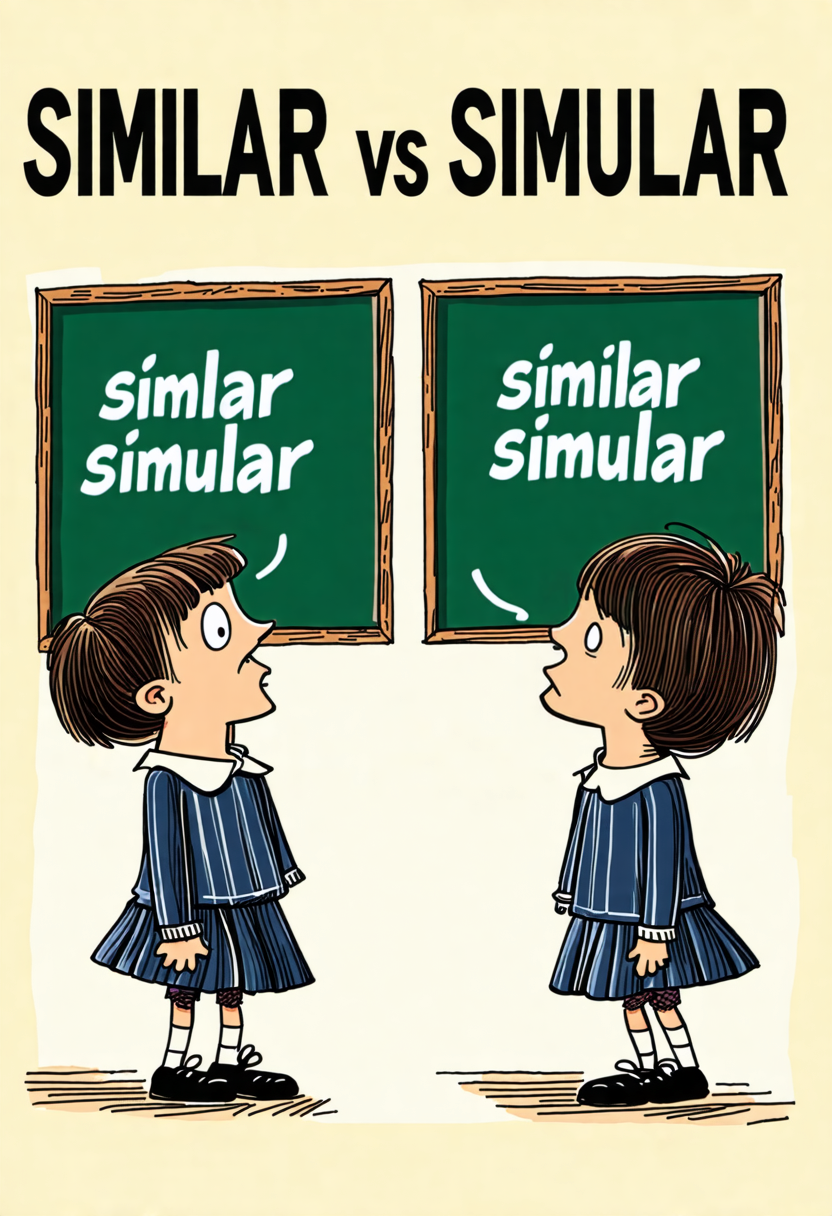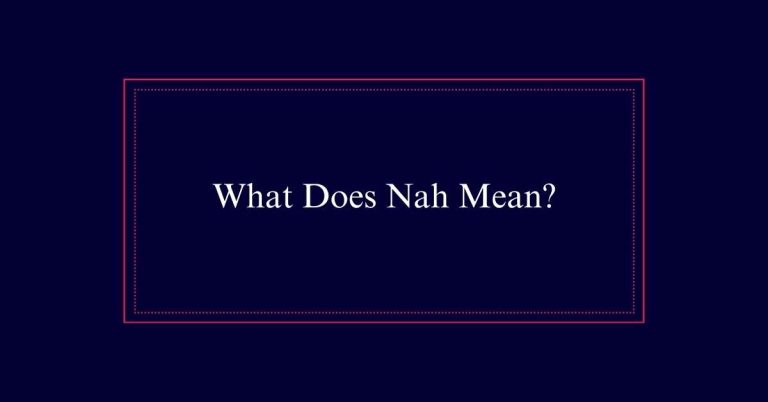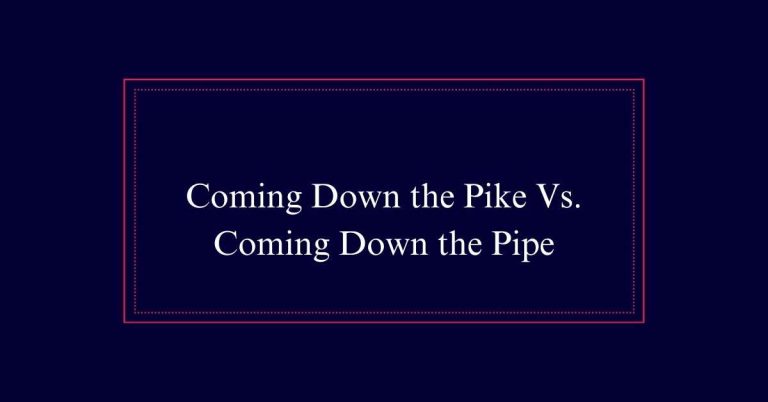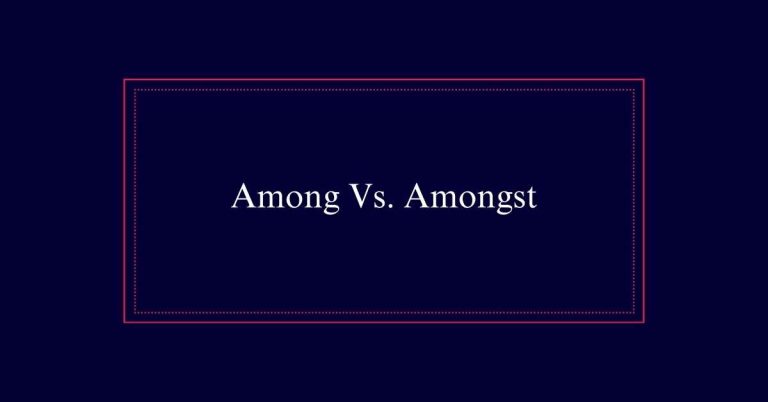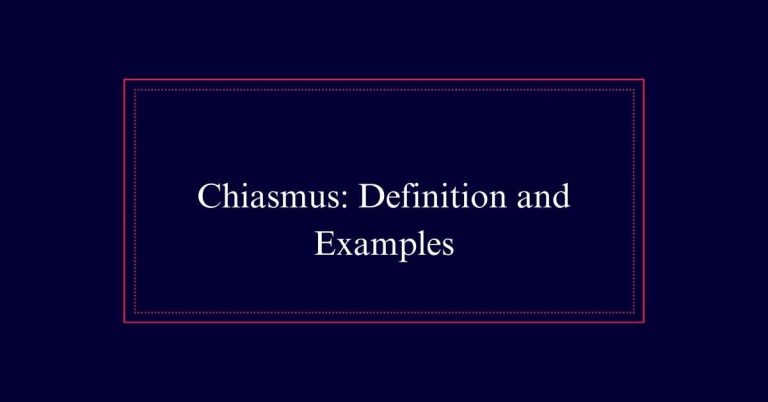Similar Vs. Simular
The correct word is “similar.” It denotes a resemblance or likeness between objects, ideas, or people. “Similar” is used to highlight shared characteristics, facilitating clear communication. The term “simular” is an incorrect variant and should be avoided to maintain proper language usage. Correctly using “similar” enhances writing and speaking skills, ensuring that the comparison or connection being made is understood.
Definition of ‘Similar’
‘Similar’ means having a resemblance or likeness. It indicates a connection or comparison between two or more things. When something is described as similar, it shares common characteristics or traits with something else.
This term is often used to highlight how different entities can have parallel features. For example, two paintings might be similar in color and style, even if created by different artists. The concept of similarity helps in expressing how things can look alike or share qualities.
It is a useful term in both everyday conversation and technical descriptions, allowing for clear and concise communication about the commonalities between different items or ideas.
Understanding ‘Similar’
Gaining a deeper understanding of ‘similar’ involves exploring its correct definition and proper usage. ‘Similar’ means having a resemblance or likeness, indicating a connection or comparison between entities. It is used to highlight common characteristics or traits and to draw parallels. Grasping the nuances of ‘similar’ is crucial for clear communication.
To better understand ‘similar,’ consider the following points:
- Definition: ‘Similar’ denotes resemblance or likeness.
- Context: It highlights common characteristics between entities.
- Comparison: It is used to draw parallels between different items.
- Expression: It helps express similarity in appearance, features, or qualities.
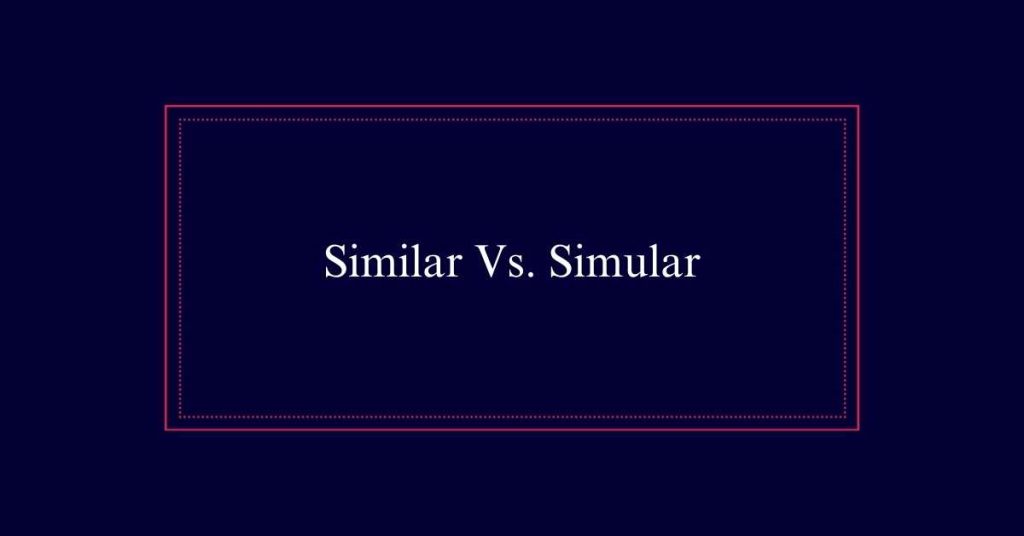
Proper Usage
Correct usage of the term ‘similar’ is crucial for effective communication. Pronouncing and using ‘similar’ correctly guarantees that listeners and readers clearly understand the intended comparison.
It is essential to distinguish between ‘similar’ and the incorrect term ‘simular,’ which may lead to confusion.
Using ‘similar’ accurately can enhance both writing and speaking skills. Consistent practice helps embed the term in your vocabulary, contributing to more precise and articulate expression.
Mastery of ‘similar’ also aids in creating clear and concise communication. By focusing on the proper use of ‘similar,’ you can improve your overall language proficiency and ensure your message is effectively conveyed.
‘Similar’ in Context
The two dresses exhibit a striking resemblance in both style and color. This scenario aptly illustrates the use of the word ‘similar.’ In various contexts, ‘similar’ helps to draw comparisons and highlight common traits.
Here are some ways to use ‘similar’ effectively:
- Appearance: Describe how two objects look alike.
- Function: Explain how two items serve the same purpose.
- Experience: Share how two events or situations feel the same.
- Characteristics: Compare features of different entities.
Examples of ‘Similar’
Consider how the word ‘similar’ is used to compare two dresses that share the same style and color. This term helps convey that despite minor differences, the dresses look alike.
Another example is when a new restaurant’s ambiance and menu resemble those of one you visited last week. In art, ‘similar’ can describe paintings that share color schemes and composition.
You might also note a similar experience while traveling to different cities. Additionally, two objects can be similar in size but differ in other ways.
Differentiating ‘Similar’ Vs. ‘Simular’
Understanding the difference between ‘similar’ and ‘simular’ is essential for precise communication.
‘Similar’ means having a resemblance or likeness, used to compare common traits between entities.
On the other hand, ‘simular’ is a non-standard term that is often mistakenly used in place of ‘similar’. Proper differentiation between these terms guarantees accurate expression and avoids confusion.
To clearly distinguish between ‘similar’ and ‘simular’, consider the following:
- Definition: ‘Similar’ signifies resemblance; ‘simular’ is incorrect.
- Usage: Use ‘similar’ in formal and informal contexts.
- Pronunciation: ‘Similar’ is pronounced /ˈsɪmɪlər/; ‘simular’ is not recognized.
- Accuracy: Correct usage of ‘similar’ enhances clarity.
Avoiding ‘simular’ in written and spoken language maintains precision.
Importance of Accurate Usage
Accurate usage of ‘similar’ is important for clear and effective communication. Misusing ‘similar’ can lead to misunderstandings and obscure the intended message. Precision in language guarantees that ideas are conveyed accurately and efficiently. This is particularly important in professional and academic settings where clarity is essential.
| Feeling | Incorrect Usage | Correct Usage |
|---|---|---|
| Confusion | ‘The two are simular.’ | ‘The two are similar.’ |
| Clarification | ‘They look simular.’ | ‘They look similar.’ |
| Understanding | ‘A simular effect.’ | ‘A similar effect.’ |
Language Proficiency With ‘Similar’
Regular use of ‘similar’ in speech and writing greatly enhances language proficiency. It allows individuals to draw clear comparisons and articulate ideas effectively. Mastering the correct usage of ‘similar’ is essential for precise communication.
Here are four benefits of using ‘similar’ correctly:
- Improved Vocabulary: Regular practice expands one’s word bank.
- Enhanced Clarity: Accurate usage guarantees the message is understood.
- Better Writing Skills: Proper usage refines composition quality.
- Effective Expression: Helps in conveying thoughts clearly.
Enhancing Communication Skills
Mastering the use of ‘similar’ can greatly enhance your communication skills. Proper usage refines language proficiency and guarantees clear expression. Understanding the nuances of ‘similar’ broadens vocabulary. Regularly incorporating ‘similar’ in writing and speech sharpens language abilities. Consistency in using ‘similar’ correctly contributes to effective communication strategies. Below is a comparison to illustrate its application:
| Context | Example Sentence | Explanation |
|---|---|---|
| Comparison | The two reports are similar in structure. | Highlights resemblance in format. |
| Experience | I had a similar reaction to the news. | Shows a shared emotional response. |
| Appearance | These models are similar in design. | Indicates likeness in visual features. |
| Function | Both tools have similar functions. | Points out common operational traits. |
